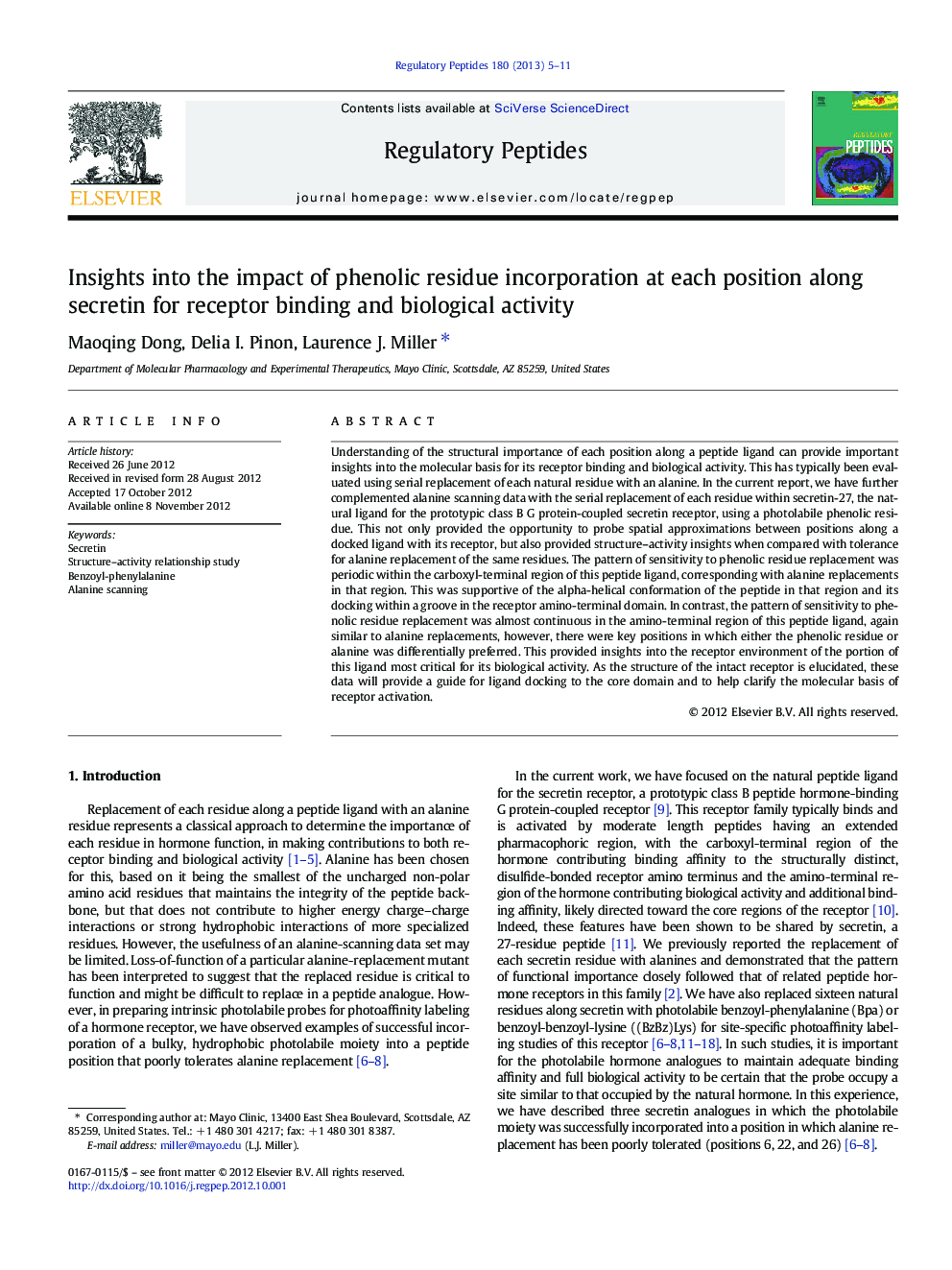| Article ID | Journal | Published Year | Pages | File Type |
|---|---|---|---|---|
| 2022466 | Regulatory Peptides | 2013 | 7 Pages |
Understanding of the structural importance of each position along a peptide ligand can provide important insights into the molecular basis for its receptor binding and biological activity. This has typically been evaluated using serial replacement of each natural residue with an alanine. In the current report, we have further complemented alanine scanning data with the serial replacement of each residue within secretin-27, the natural ligand for the prototypic class B G protein-coupled secretin receptor, using a photolabile phenolic residue. This not only provided the opportunity to probe spatial approximations between positions along a docked ligand with its receptor, but also provided structure–activity insights when compared with tolerance for alanine replacement of the same residues. The pattern of sensitivity to phenolic residue replacement was periodic within the carboxyl-terminal region of this peptide ligand, corresponding with alanine replacements in that region. This was supportive of the alpha-helical conformation of the peptide in that region and its docking within a groove in the receptor amino-terminal domain. In contrast, the pattern of sensitivity to phenolic residue replacement was almost continuous in the amino-terminal region of this peptide ligand, again similar to alanine replacements, however, there were key positions in which either the phenolic residue or alanine was differentially preferred. This provided insights into the receptor environment of the portion of this ligand most critical for its biological activity. As the structure of the intact receptor is elucidated, these data will provide a guide for ligand docking to the core domain and to help clarify the molecular basis of receptor activation.
► Each residue within secretin-27 was replaced with a phenolic residue. ► The impact of structural modifications on binding and activity were quantified. ► Results were compared with previous alanine scanning data. ► Relative accommodation of two distinct types of residues provides key insights.
